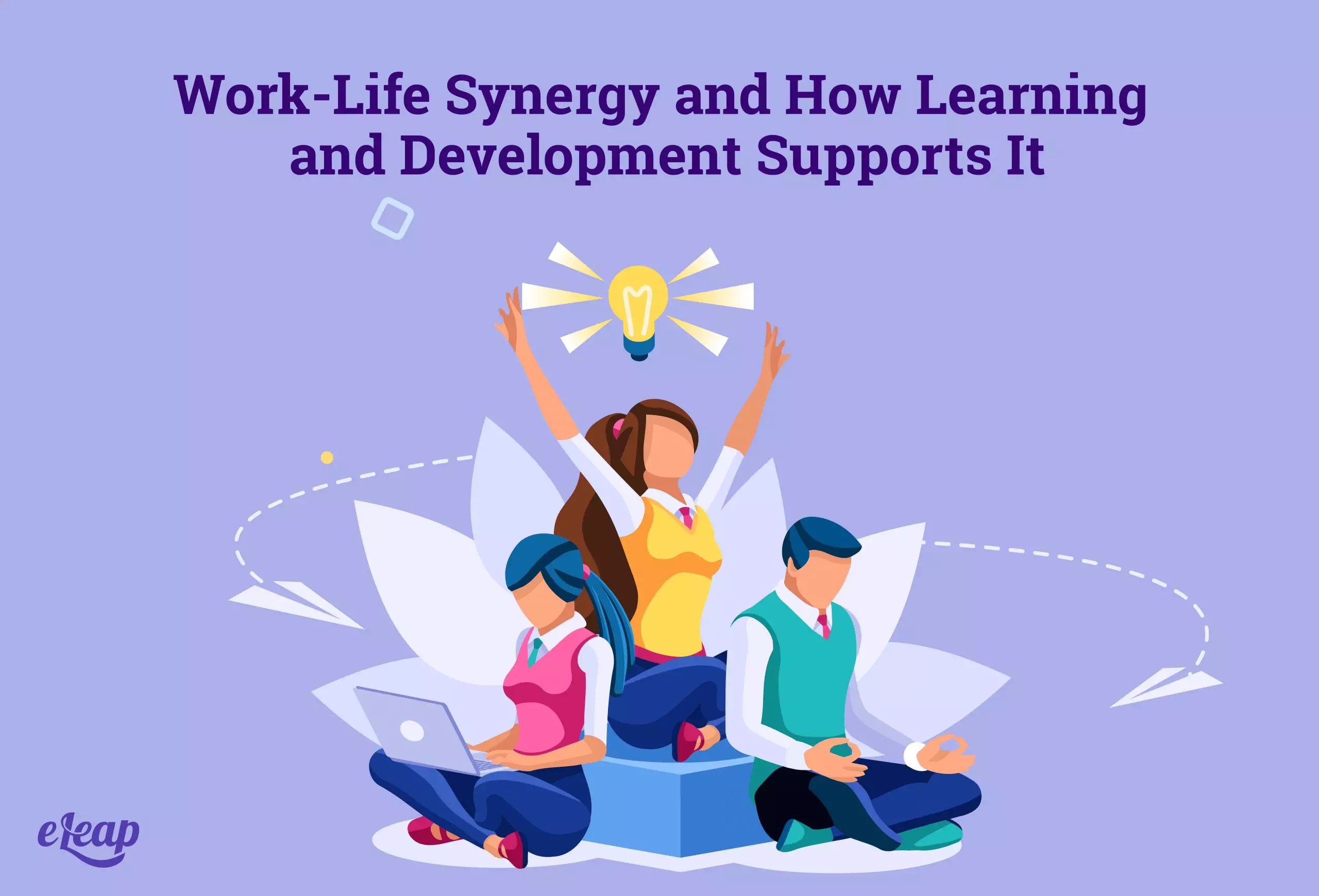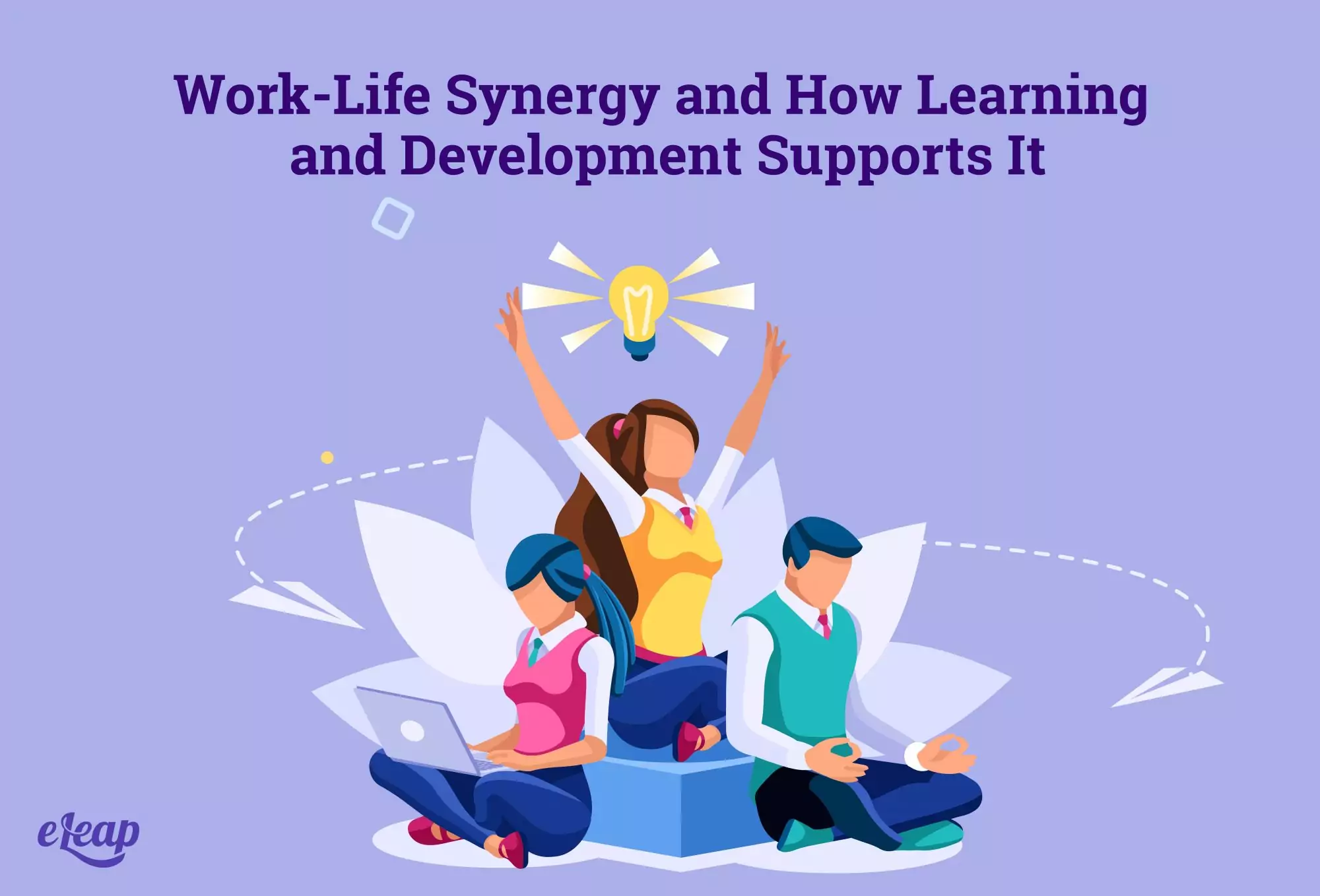Work-Life Synergy and How Learning and Development Supports It

There’s a pretty pervasive myth out there. It says that we can achieve a work-life balance. To be clear, there is no way to balance your work and personal life. They’re two sides of the same coin. They’re not separate – you have just one life.
Because you have just one life, you cannot balance the hours spent at work with hours spent on more rewarding personal projects. It doesn’t happen that way. What we need to strive for is work-life synergy, and in that quest, your learning and development efforts can be of incredible importance.

What Is Work-Life Synergy?
To understand what work-life synergy is, we need to delve into the fact that we only have one life. It combines what we do in our off time, as well as what we do during work hours. If what we do during our work hours doesn’t resonate with our values, our goals, our sense of the importance of things, we’re going to be unhappy no matter how much money we’re making.
Simply put, work-life synergy is the relationship between our work life and our personal life, where each complements and builds off of the other. It’s about allowing ourselves to be our true selves all the time. It’s about finding meaningful work that aligns with our talents, beliefs, and personal goals, not just with our need for a paycheck.
How Can Your Organization Empower Work-Life Synergy?
Given the importance of creating work-life synergy, managers and decision-makers must have a good understanding of how their organization can help foster it. What can you do? Actually, there are several things and we’ll break them down below.
Offer Flexible Benefits
The only certainty about life is that it’s uncertain. It throws curveballs. The unexpected should be expected. Most companies today don’t make it easy for their employees to roll with the punches, though. You can change that by offering flexible benefits, such as:
- Family leave
- Mental and emotional wellness support tools
- Flexible work arrangements
- A la carte benefits menus that empower employees to mix and match
Help Employees Tie Their Work Directly to Company Goals
If employees are unable to connect their efforts to mission-critical company objectives, it can begin to feel pretty meaningless. As a manager or decision-maker, it’s your responsibility to help them connect those dots. You can do this in several ways. For instance, you can use check-ins to help explain and point out to employees how and where their efforts matter. You can show them the impact of their work and how that impact helps the company move forward.
You can also help them map out where they want to go within the organization and how that new role or position can help the company succeed. By combining performance management with L&D, you can create a more holistic workplace that supports employee development and empowers company success by connecting the two.
Support Causes
Corporate social responsibility is more than just a buzzword. Employees want to work with companies committed to supporting causes they value and can get behind. Make sure that you support at least some causes – it could be something as simple as sponsoring a local sports team, or it could be as all-encompassing as striving to reduce single-use plastics entering the ocean.
Tailor Your Efforts for Millennials
More and more Baby Boomers are retiring. Gen Xers are also getting long in the tooth. In just a few short years, Millennials will make up 75% of the workforce. You need to ensure that you’re tailoring your efforts to suit their unique needs and requirements. What does that mean, though? It’s simple enough.
Millennials deeply value learning and development. They thrive in environments where they can challenge themselves regularly, learn new skills, and grow both personally and professionally. That means more robust L&D initiatives need to be in place to help bolster that required work-life synergy.
In an ideal world, your learning and development strategy would include the following:
- An assessment of individual goals and objectives in their professional lives
- An assessment of individual strengths, talents, and weak points
- The ability to deliver feedback to L&D teams
- The ability to learn in collaborative environments with others
- The ability to self-assess progress in learning and development and adjust goals as necessary
It’s tempting to think that changing your L&D strategy for Millennials would put other workers at a disadvantage. However, the converse is true. From Baby Boomers to Gen Xers to Gen Z, open communication, flexibility in work, and the ability to learn grow, and develop also help foster a greater sense of engagement.
Commit to Investing in Your Team
Work-life synergy might sound a little strange at first, but on deeper inspection, its truth becomes apparent. We are all happier when we can learn, grow, and develop in ways that allow us to be our true selves at home and in the office. We are all more engaged when what we are doing resonates with us on a deep level, and when our employer aligns with our values and ethics.
There are many moving parts to a strategy that fosters work-life synergy, but one of the most critical is that you commit to investing in your team. Invest in their development. Invest in their well-being. Invest in their physical and mental health. The result is an engaged workforce that stays with you for longer periods, while simultaneously boosting performance, efficiency, productivity, and profitability.
Ultimately, these efforts will result in the creation of a new corporate culture – one where loyalty and engagement are valued beyond the number of hours an employee works. It creates a culture where values align and where employees are intrinsically invested in helping the company to achieve critical goals and milestones.
However, to achieve that, management and leaders must change their own mindsets. We must break out of the current mold of thinking and realize that we’re not just hiring a skillset or adding another Social Security number to payroll. We’re employing a human being and all their hopes and dreams for the future.